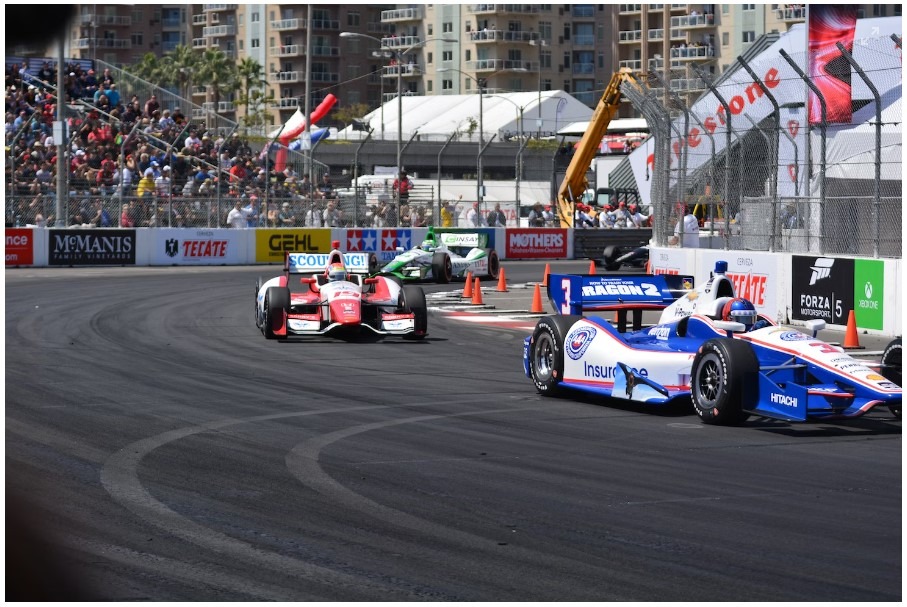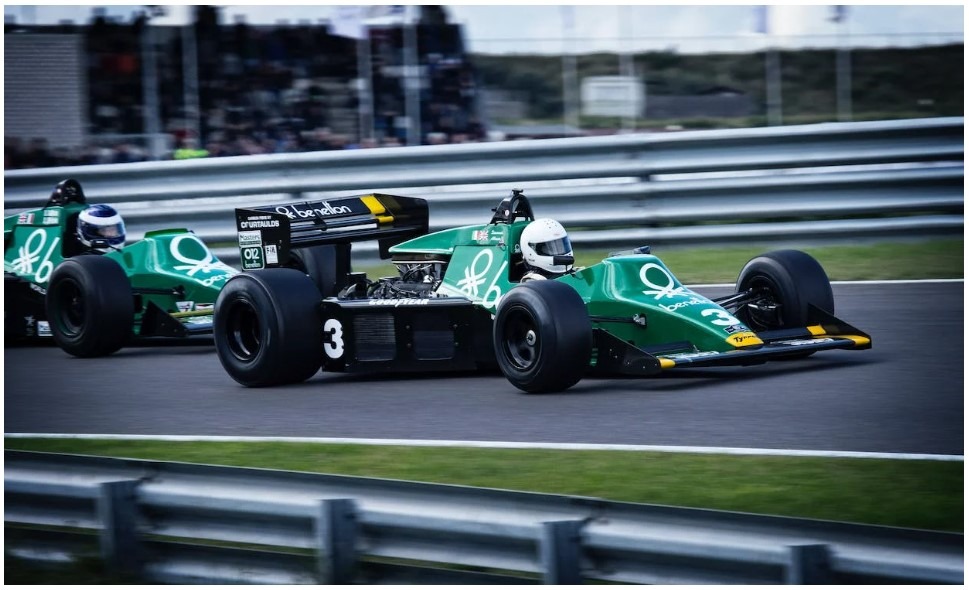Formula One (F1), or initially known as Formula A), has its origin during the earliest times of motor racing. It came out from the resilient European racing landscape following the inter-war period.
In the late 1930s, the ideas for a F1 championship race were discussed. However, the plans did not prosper due to the start of World War 2
The plans were brought up again in 1946. During the said period, the first F1 racing events were organized. The following year, organizers decided on a championship for F1 drivers.
The first F1 world championship race happened in May 1950 at Silverstone.
While there were only seven of the 20 F1 races that season going to the title, the championship continued to run.
Non-championship F1 races continued to take place until 1983 as the cost of the game skyrocketed.
Despite what happened, many drivers continued to run their own cars. The F1 was ruled by pre-war manufacturers like Maserati, Mercedes Benz, Alfa Romeo, and Ferrari.
Giuseppe Farina bagged the F1 inaugural record. However, the key driver in the 1950s was Juan Manuel Fangio. He continued to dominate the drivers’ championship titles in 1951, 1954, 1955, 1956, and 1957.
The start of F1 was a challenging one due to the lack of participants. During the first decade, at least 13 F1 drivers also died in the race.
As years went by, F1 cars became more technologically sophisticated. Incredible innovations were also made. During the first seasons in pre-war times, F1 cars had an engine on front, narrow-treaded tires, and 1.5 liters supercharged or 4.5-liter engines. In 1954, the F1 regulations returned, with engines limited to 2.5 liters. However, Mercedes Benz came up with a big change until they exited from all motorsports following the disaster at Le Mans in 1955.
A rear-engined car came out in the late 1950s. In 1961, all car manufacturers had this type of car engine. A well-built car became an important component during the race.
1n 1958, the F1 also saw the aggressive entries of British drivers. Between 1962 and 1973, nine drivers’ championships were from the UK.
Innovations on F1 car engines continued to develop. The cars became slicker and faster with the use of ground-effect aerodynamics.
Due to the speed of turbocharged F1 cars, organizers looked at the safety and emergency side of the race. In 1975 alone, at least four spectators were killed when an F1 driver hit the crowd during the Spanish Grand Prix.
In 1976, Ferrari started to dominate the race again, courtesy of Clay Regazzoni and Niki Lauda. In 1978, Lotus made a comeback lead with the use of sophisticated engine technology. Mario Andretti ruled in six of the 16 races.
Formula 1 also started having commercial rights, making it a multi-billion dollar sports business. In 1971, Bernie Ecclestone orchestrated the rearrangement in the management of Formula 1 commercial rights. In 1978, he became the head of Formula One Constructors’ Association (FOCA).
However, Fe’de’ration Internationale du Sport Automobile, or FISA, was established in 1979. The formation of FISA created a conflict with FOCA in terms of Formula 1 regulations and revenues. A truce between the two came out following the 1981 Concorde Agreement.
Alan Jones and the Williams team ruled in 1980. Nelson Piquet won in 1981’s U.S Grand Prix. In 1982, a rivalry came out between Ferrari’s Gilles Villeneuve and Didier Pironi. However, Villeneuve died at Zolder.
In 1983, Piquet won with Brabham. McLaren had its dominance in 1984 until 1988.
In 1989, turbochargers were banned. In the 1990s, McLaren and Williams continued to dominate, with McLaren winning 16 championships, while Williams also had 16 titles.
With the deaths of some car drivers, Formula 1 made some changes in the speed and safety of the drivers.
From 1984 until 2008, Williams, Renault (previously, Benetton), Ferrari, and McLaren dominated every World Championship.
From 1990 to 2008, at least 28 teams joined the race, including independent teams.
In 2000, Ferrari’s Michael Schumacher won in Malaysia, with team-mate Rubens Barrichello in third place. Between 1999 and 2004, Schumacher and Ferrari dominated the races, winning five consecutive drivers’ championships and six straight constructors’ championships.
The international popularity of Formula 1 also extended to other markets like the Middle East. Other teams were also from BMW, Honda, Toyota, and Renault, which participated in the commercial success of the race.
In 2006, Schumacher retired. According to ESPN, the retirement of Schumacher also coincided with the return of Formula 1’s prestige and popularity, despite some behind-the-scenes politics.
Some amazing facts about F1 racing
F1 car can cost more or less $7-million
Interestingly, you cannot buy F1 cars in the market. You have to build it! The average cost of an F! car is around $7 million, excluding the expenses of other essential car components. This price tag will also increase now and then as the rules of F1 car design may vary.
F1 car has over 80,000 components
An F1 car is built with over 80,000 assembled components. Every component is vital to the speed and condition of the car engine. The assembling of the parts is very delicate and crucial in the race. If one piece is not placed correctly or accurately, it will jeopardize the condition of the car.
F1 car engine cannot be used for over 5 races
The F1 car engine is not conventional. The sophisticated engine only allows the car to be used for not more than five racing events.
F1 team is composed of around 600 people
An F1 team is composed of around 600 people. Each of them has a different role to play during the race. Other team members can be seen at the trackside while are working behind the scene for any eventualities during the racing competition.
F1 car tire can lose 0.5 kgs or more every race
The speed from F1 car racing allows it to lose its tire’s weight up to 0.5 kgs in just one racing event. The sudden application of brakes and the high speed, along with other factors, adds up to the weight loss of the car’s tires. This is why F1 cars are only using top-quality tires for maximum performance during the racing event.
F1 driver’s helmet is one of the most durable of all types of helmets
The type of helmet used by F1 car drivers is one of the strongest in the world. It can help the drivers during accidents, protecting their head and neck from further injuries. Although the helmet is light in its weight, it is very tough to give protection to the driver.
F1 car engine cannot be turned when it is cold
F1 car engines are always heated before it is being used in the race. In this manner, the car is equipped with a gearbox and external heater pump.
F1 cars can accelerate so fast
F1 cars quickly accelerate from 0 to 100 MPH. Then it can swiftly return to zero in just four seconds. In this process, F1 drivers had to undergo different training for them to master the quick application of brakes as they go through the corners of the race track.
F1 cars do not refuel
While an F1 car would make a stop during the race, it is not making any refueling efforts. The stop that is made is mostly for tire replacement. The F1 car uses the same tank of gas for the whole duration of the race. The refueling of the car is not made to avoid accidents during the racing event.
F1 car racing can lose up the driver’s weight
Interestingly, F1 car drivers may lose 4 kgs in every race due to the extreme type of temperature in the car’s cockpit.
F1 car steering wheel has up to 20 buttons.
The F1 car steering wheel is complex as it contains up to 20 buttons. Like a cockpit of an airplane, an F1 steering wheel contains plenty of buttons that function separately to turn the engine into its optimum level.
F1 car brake disc can reach up to 1,000 degrees centigrade
The brake disc of F1 car can reach 1,000 degrees centigrade, or equivalent to a molten lava’s temperature, based on AskMen. This fantastic development on its brake disc has been considered an engineering feat.



